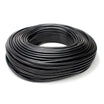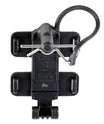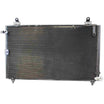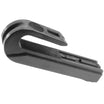Introduction to Shock Absorbers: Your Ultimate Guide
If you're passionate about cars, you've undoubtedly heard about shock absorbers—but you might wonder exactly what they do and why they're so essential. While often overlooked, shock absorbers (also known simply as "shocks" or "dampers") are among the most crucial components influencing vehicle comfort, handling, and safety. In this article, we'll simplify everything you need to know about shock absorbers, their purpose, types, and history, in a straightforward and digestible format.
What Exactly Is a Shock Absorber?
Simply put, a shock absorber is a mechanical or hydraulic device designed to dampen or absorb the impact of road surfaces, providing a smoother ride by reducing vehicle bounce. They ensure your tires maintain consistent contact with the road, significantly improving handling, ride comfort, and braking performance.
Why Shock Absorbers Matter
Shock absorbers play several key roles:
-
Ride Comfort: They absorb road bumps and vibrations, significantly enhancing the comfort of the driver and passengers.
-
Vehicle Stability: Shocks prevent excessive body roll, pitch, and yaw movements, especially during braking, acceleration, or cornering.
-
Tire Contact: They keep your wheels pressed firmly to the road, which is essential for consistent handling and braking.
-
Safety: Properly functioning shocks reduce stopping distances and improve vehicle stability in emergencies.
Brief History of Shock Absorbers
Shock absorbers have evolved dramatically since their initial development:
-
Early Suspension Systems: Initially, vehicles relied solely on leaf springs or friction between leaves to absorb road irregularities. While simple, these setups often lacked adequate damping, causing uncomfortable rides and instability.
-
First Dampers (Early 1900s): Around the turn of the 20th century, friction-type dampers (snubbers) became common. These used discs or leather straps tightened to create friction, reducing vehicle bounce somewhat effectively for the era.
-
Rise of Hydraulic Dampers (1920s): Hydraulic dampers, utilizing oil forced through orifices or valves, became popular due to their superior damping capabilities compared to friction types.
-
Telescopic Dampers (1950s onward): The modern telescopic shock absorber design, resembling today's standard shocks, emerged in the 1950s, offering improved reliability, efficiency, and easier integration into car suspensions.
-
Modern Era (1980s–Present): Advancements in damper technology brought adjustable shocks, magnetorheological (MR) shocks (which alter stiffness electronically), and adaptive suspension systems that can automatically adjust damping according to road conditions and driving style.
Types of Shock Absorbers
Shock absorbers come in various types, each with distinct advantages and applications:
1. Friction-Type Shock Absorbers:
-
Early automotive designs used friction between metal or leather discs.
-
Simple and inexpensive, but inefficient and inconsistent.
-
Rarely used today outside of historical or vintage vehicles.
2. Hydraulic (Fluid-Filled) Shock Absorbers:
-
The most common type today.
-
Work by forcing oil through internal valves to absorb and dissipate kinetic energy from suspension movements.
-
Provide smooth, predictable damping.
3. Gas-Charged (Gas-Pressurized) Shock Absorbers:
-
Include nitrogen gas under pressure to prevent oil foaming (cavitation) under heavy use.
-
Provide consistent damping performance, particularly under harsh conditions.
-
Commonly used in performance and off-road vehicles.
4. Adjustable Shock Absorbers:
-
Allow drivers to manually or electronically adjust damping characteristics.
-
Ideal for performance enthusiasts and those who drive in varying conditions (track, street, off-road).
5. Air Shock Absorbers:
-
Utilize compressed air as a spring, allowing adjustable ride height and load support.
-
Often used in luxury or heavy-duty applications.
6. Magnetorheological (MR) Shock Absorbers:
-
Contain special fluids that alter viscosity (stiffness) when exposed to magnetic fields.
-
Offer real-time adjustments and superior ride quality.
-
Commonly found in high-end sports cars and luxury vehicles.
How Shock Absorbers Work (Simplified)
Shock absorbers operate by converting kinetic energy (from suspension movements) into heat, which is dissipated into the atmosphere. When your car hits a bump:
-
Compression Phase: The shock absorber compresses, forcing oil through small internal valves.
-
Rebound Phase: As the shock extends back, the oil flows through valves in the opposite direction, ensuring smooth damping.
This process ensures the suspension returns to a stable position quickly, preventing the continuous bouncing of the vehicle.
Main Components of a Shock Absorber
Understanding the components helps you better grasp how shocks function:
-
Piston: Moves up and down inside the cylinder, forcing fluid through valves.
-
Cylinder: Contains hydraulic fluid (oil), with orifices controlling fluid flow.
-
Valve System: Controls how quickly the oil can move within the shock, adjusting the damping rate.
-
Rod: Connects the piston to the suspension component.
-
Seal: Keeps oil inside and prevents contamination.
-
Bushings and Mountings: Secure shocks to the vehicle chassis and suspension components, reducing vibrations transmitted to the vehicle body.
Common Signs of Worn Shock Absorbers
Shock absorbers wear gradually, and it's crucial to recognize when they might need replacement:
-
Excessive bouncing after hitting bumps.
-
Increased stopping distances.
-
Vehicle dipping or nose-diving during braking.
-
Unusual tire wear patterns (cupping or scalloping).
-
Excessive body roll during cornering.
-
Visible oil leaks around shock absorbers.
Why You Should Regularly Inspect Shock Absorbers
Properly functioning shocks significantly improve your driving experience and safety. Regular inspections can:
-
Ensure Safety: Good shocks improve braking and handling, keeping you safe in various driving conditions.
-
Save Money: Prevent uneven tire wear and reduce strain on other suspension components.
-
Enhance Comfort: Maintain a smooth, comfortable ride by absorbing road vibrations effectively.
Basic Maintenance Tips
Keeping your shock absorbers in great shape doesn't require complicated procedures:
-
Regularly inspect for oil leaks or damaged mounts.
-
Check shock absorber performance every 20,000–30,000 miles.
-
Replace shocks every 50,000–70,000 miles or if performance noticeably decreases.
-
Pay attention to any changes in vehicle handling or comfort levels.
Final Thoughts: Why Enthusiasts Should Care About Shock Absorbers
Shock absorbers are much more than mere components hidden under your car—they dramatically impact your driving experience. Whether your goal is better ride comfort, sharper handling, enhanced safety, or all three, understanding and maintaining your shock absorbers will significantly elevate your overall enjoyment and confidence behind the wheel.
Stay tuned for next week’s article as we delve deeper into the fascinating history and evolution of shock absorbers, helping you understand how far we've come and what innovations lie ahead.




























Leave a comment
All comments are moderated before being published.
This site is protected by hCaptcha and the hCaptcha Privacy Policy and Terms of Service apply.